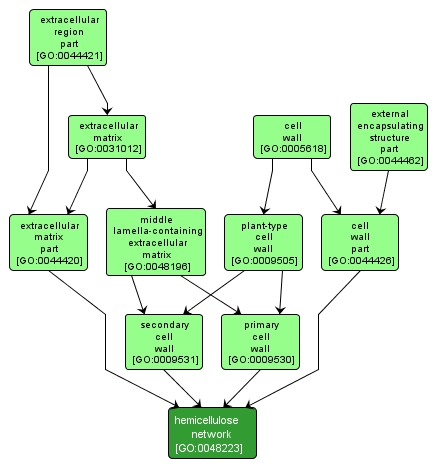| Desc: |
Network composed of hemicelluloses; members of a class of plant cell wall polysaccharide that cannot be extracted from the wall by hot water or chelating agents, but can be extracted by aqueous alkali. Includes xylan, glucuronoxylan, arabinoxylan, arabinogalactan II, glucomannan, xyloglucan and galactomannan. |














